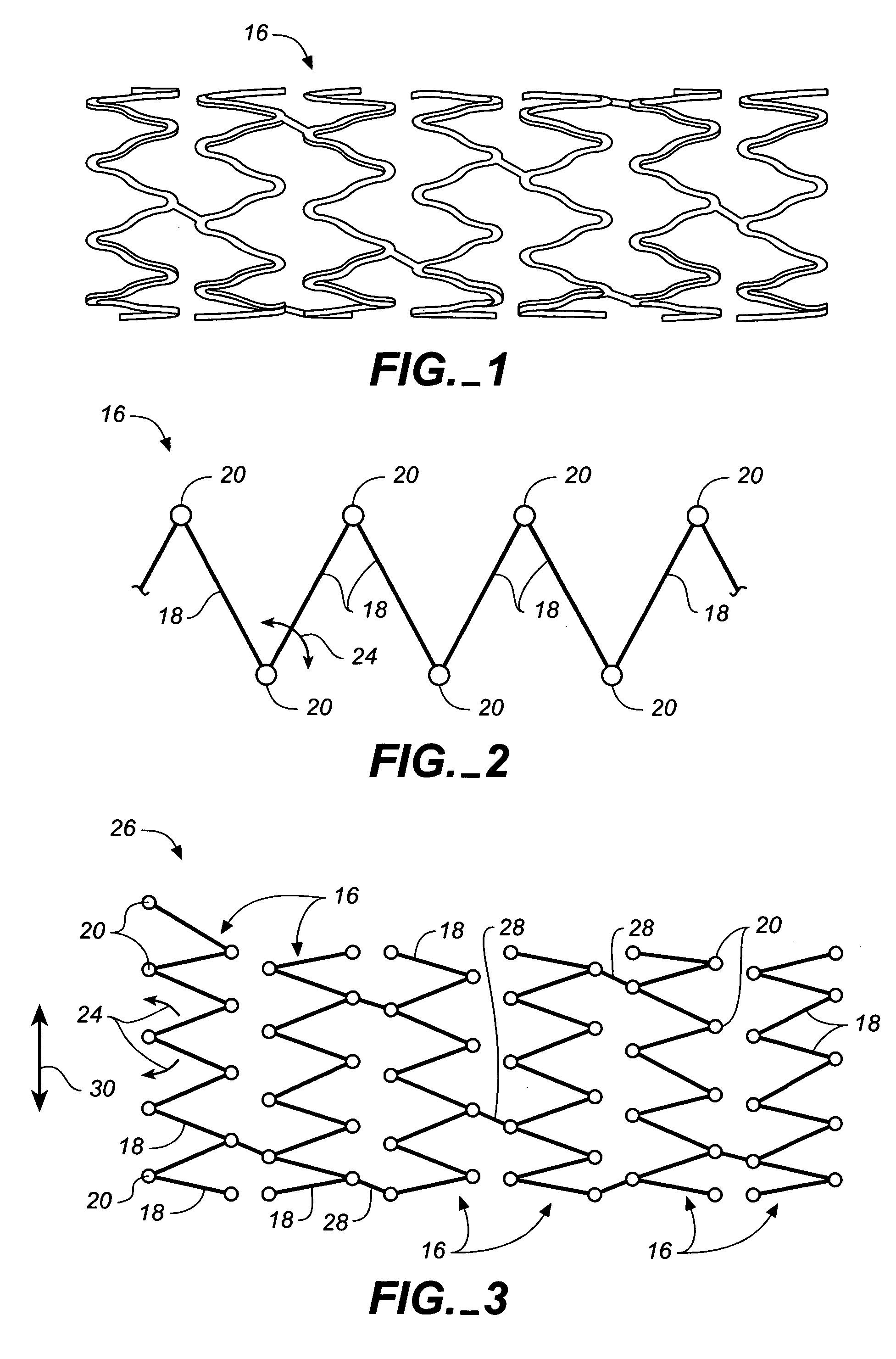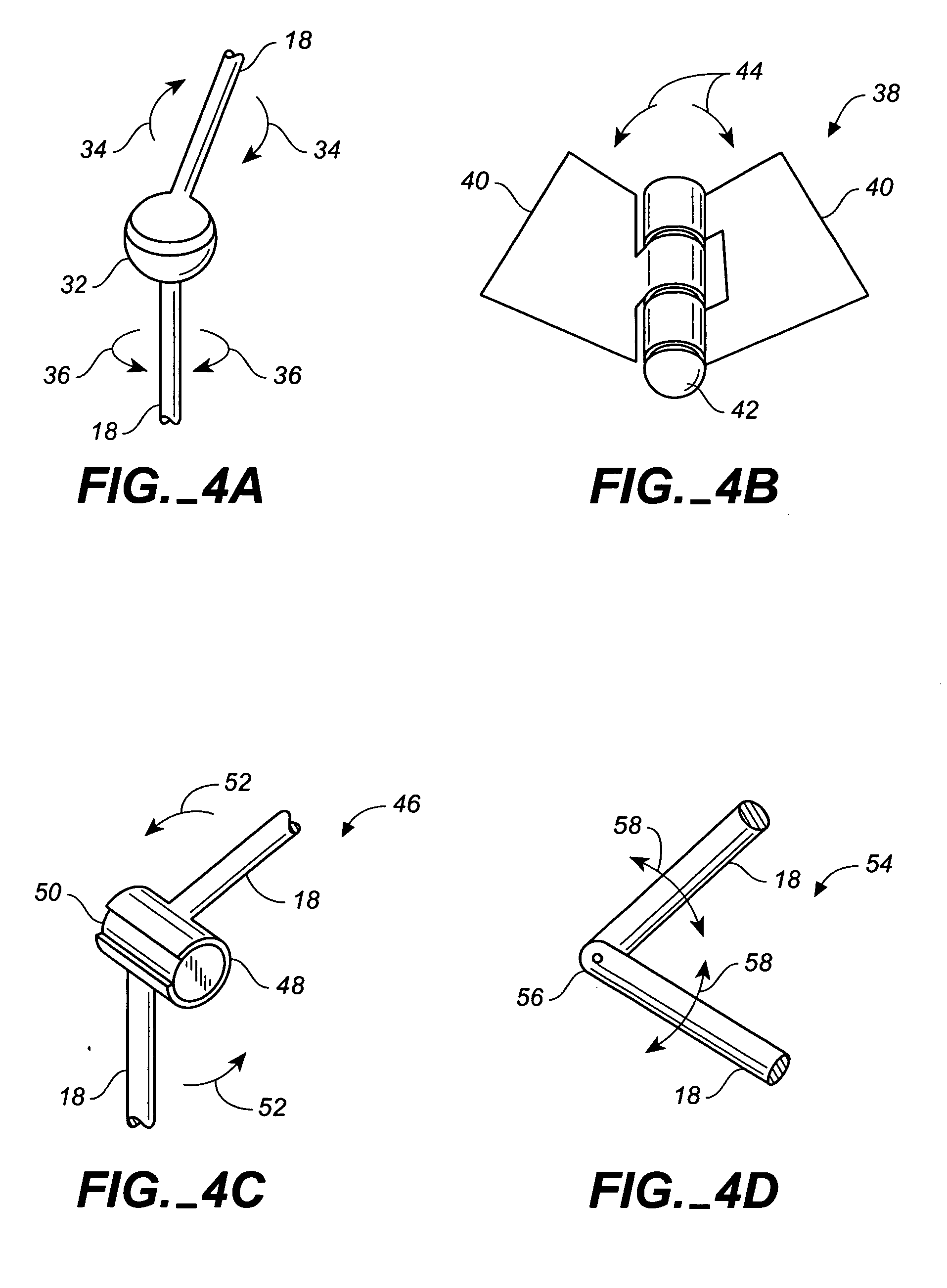Deformation medical device without material deformation
a medical device and material technology, applied in the field of medical devices, can solve the problems of existing stent designs that are incompatible with mri visualization, unable to meet the requirements of mri visualization, and the use of a material, such as ceramic, can present its own challenges
- Summary
- Abstract
- Description
- Claims
- Application Information
AI Technical Summary
Benefits of technology
Problems solved by technology
Method used
Image
Examples
Embodiment Construction
[0023]FIG. 1 is a schematic drawing of a segmented stent 10 in accordance with a conventional design. Stent 10 is illustrated as a closed cell design in which a plurality of closed cell stent segments or struts 12 are interconnected by connectors 14. Stent 10, in the past, has been formed as a self-expandable type of stent made of self-expanding material, such as Nitinol. Such stents are cut or etched from tubular stock or rolled or cut or etched from flat sheets of Nitinol or other shape memory metals, which do not themselves exhibit permanent deformation. In general, the self-expanding stent design tends to return to its unconstrained or expanded conformation.
[0024] Alternatively, stent 10 has been formed as an expandable stent, which is expandable under an externally applied pressure that is applied to the stent in a radially outward direction. Such stents are typically crimped around an expansion balloon and inserted to a desired position in the vasculature. The balloon is then...
PUM
 Login to View More
Login to View More Abstract
Description
Claims
Application Information
 Login to View More
Login to View More - R&D
- Intellectual Property
- Life Sciences
- Materials
- Tech Scout
- Unparalleled Data Quality
- Higher Quality Content
- 60% Fewer Hallucinations
Browse by: Latest US Patents, China's latest patents, Technical Efficacy Thesaurus, Application Domain, Technology Topic, Popular Technical Reports.
© 2025 PatSnap. All rights reserved.Legal|Privacy policy|Modern Slavery Act Transparency Statement|Sitemap|About US| Contact US: help@patsnap.com



